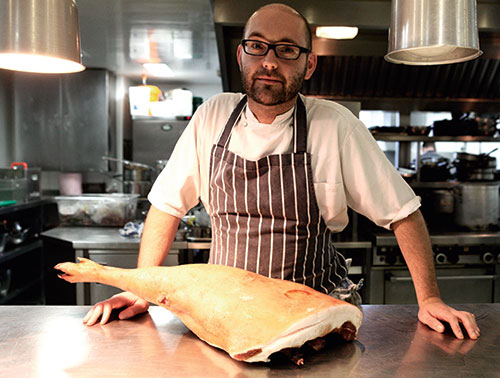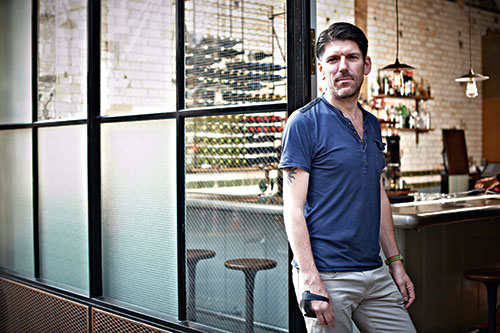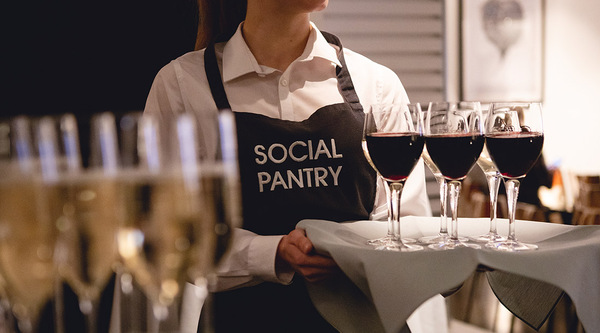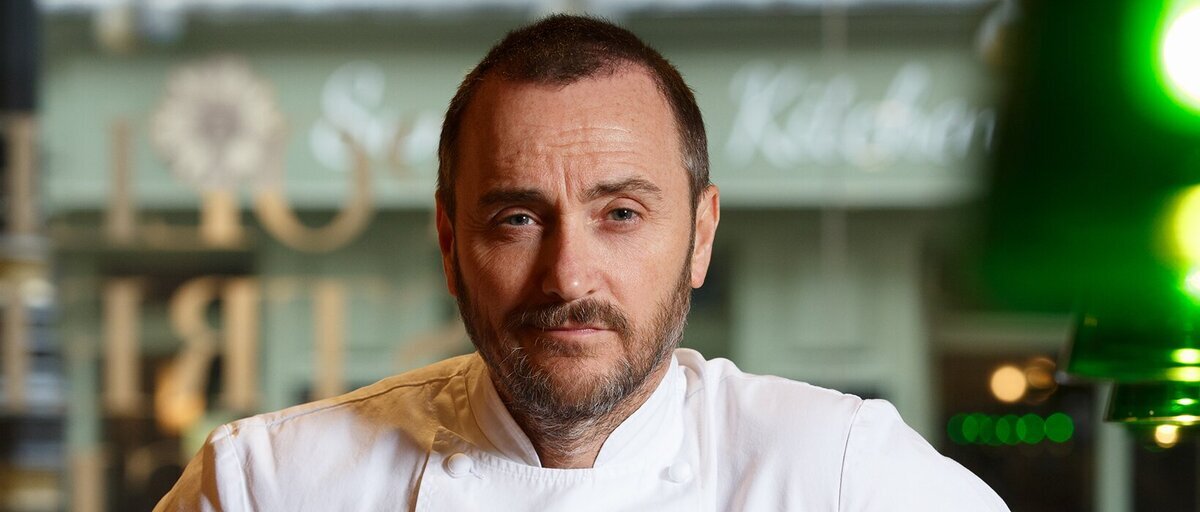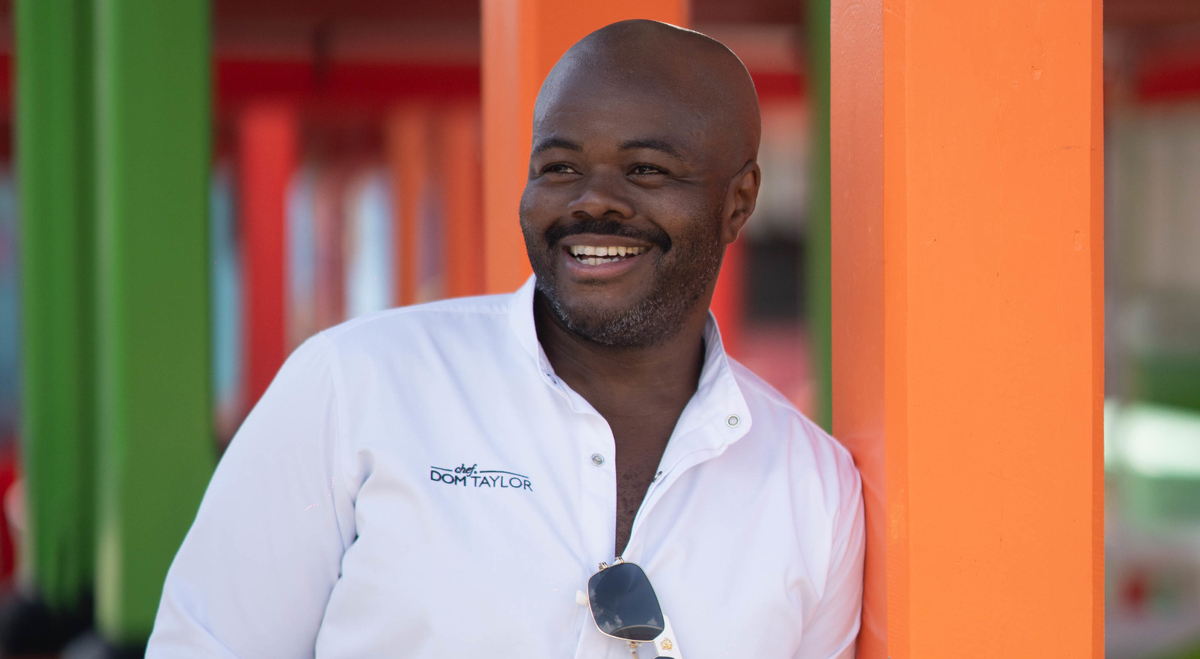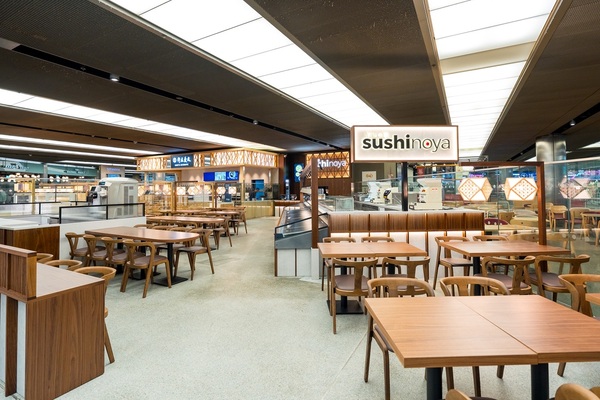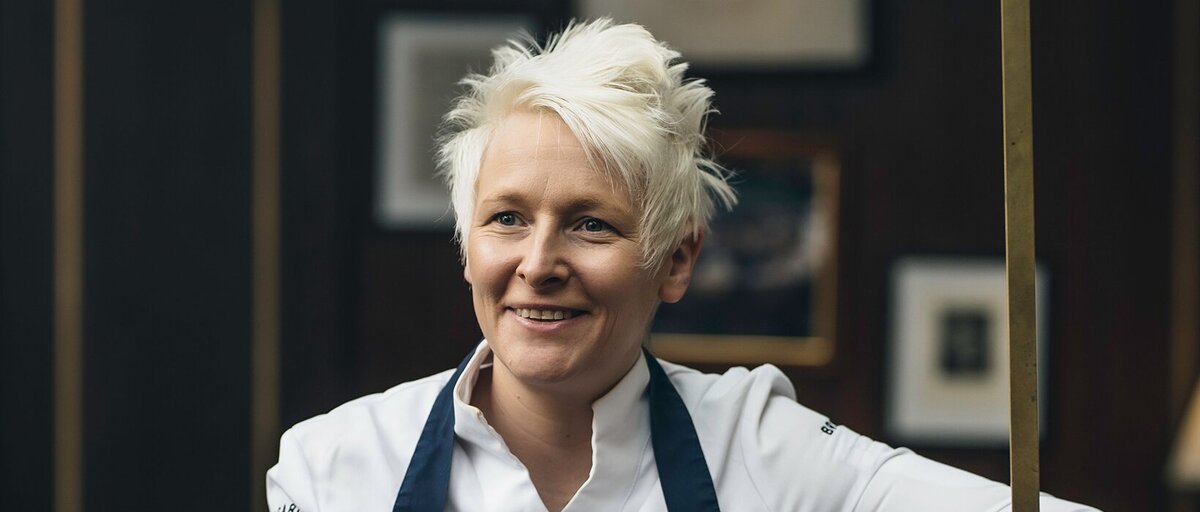Why chefs are moving front of house
Being a chef isnât an easy job. So what would be the point of putting additional stress on a hard-working kitchen brigade by asking them to serve plates in a dining room already staffed by a skilled front-of-house team? The answer is that an increasing number of restaurants all over the country are discovering that, with a little bit of thought, planning and common sense, there are very few, if any, downsides to chefs serving dishes. And the benefits for the business, customers and staff can be significant.
René Redzepi of Noma in Copenhagen is most often cited as influencing the trend. According to the introduction to Redzepiâs book Noma: Time and Place in Nordic Cuisine, chefs have been âdetailed to serve the guestsâ since Noma opened in 2003. In the book, Redzepi is quoted as saying: âI donât care about great armies of waiters in dinner jackets and bow ties manoeuvring their way through luxurious surroundings. By having the cooks serve the food we demonstrate that itâs all about their handiwork and not the packaging. Maybe we risk a few slight imperfections now and then, which would not happen with our trained waiters, but this way our guests usually have a more exciting experience. By serving the food myself I get an impression of whether everything is as it should be at the tables.â
One chef inspired by a trip to Noma is former Morston Hall head chef Richard Bainbridge, who opened Benedicts in Norwich last year.
âI loved the idea that the chefs can see the whites of the customersâ eyes. I truly think it is great for the customers because they have direct contact with the person who has cooked their food. No one has more passion for the food the customer is about to eat than the person who has cooked it. They have been on a journey with that plate of food from start to finish.â
Steven Smith of the Freemasons at Wiswell is planning to launch Mr Smithâs, a chefâs table concept with the service done entirely by chefs, later this year. He was inspired by a meal at Osteria Francescana in Modena. âMassimo Bottura delivered every course that lunchtime and it enhanced that experience massively, so thatâs one of the reasons I personally started coming out and delivering a few courses. It adds value with no extra cost.â
Stephen Toman, chef-patron of Ox in Belfast, was impressed by seeing chefs serve customers during a stage at his friend Christian Puglisiâs restaurant Relæ in Copenhagen, and wanted to recreate the experience when he opened Ox in 2013. âIt blew me away, it was such a cool idea. Our customers really love it and the chefs get a buzz off the floor.â

At the Freemasons, the only training Smith gives his chefs before they go front of house is product based. âWeâve all got different personalities, so allowing the guys to come across how they want is the best way of delivery. Weâve all been to those places where you can see something is so rehearsed itâs gone over the edge. I want people to have a bit of ownership.â
At the Twenty Six near Tunbridge Wells in Kent, chef and owner Scott Goss says that little or no training is required before allowing chefs to serve customers. âYou learn as you go. Itâs common sense, youâre just talking to people about your passion. Itâs about being nice and polite and having the knowledge about the food. As long as youâve got those there will never be a problem. Donât ask me to take payment and work the tills because that would be a disaster, but Iâve got no issue with the serving the food, clearing the plates and talking to customers.â
Having chefs serve customers has helped the Twenty Six achieve four- and five-star reviews on TripAdvisor that include comments such as: âItâs nice to be able to talk to the chef as he served at our tableâ and âThe chef also serving and explaining the dishes at the table gave it the personal touchâ.
Equal treatment
But Mikael Jonsson, chef and owner of the 28-cover Hedone in Chiswick, warns that you need to be careful about giving customers personal attention as online opinion can turn against you. âI try to go to every table at least once, because people get upset if I donât. They see me talking to someone who might be a very dear friend, who I havenât seen for years, and the only opportunity I have to talk is when they are dining in my restaurant, and you can bet thereâs going to be a TripAdvisor review saying that people get special treatment.â
Itâs not only customers who benefit from the practice; getting chefs out of the kitchen and onto the dining room floor can help boost morale, too. âIâve worked in so many kitchens where youâre just staring at white walls. To actually get out on the floor and see the smile on the customerâs face is really good for the chefs. It makes you more clued up on the menu descriptions, it makes you sharper to know that you might have to answer questions,â says Toman, who also acknowledges that having chefs out of the kitchen during service has to be managed carefully.
âFor the five-course tasting menu, the chefs will serve at least two of them: normally the amuse bouche, usually the second course if we can and the dessert. The fish course and the main course can be a bit too fast-paced and the chefs canât really leave the stoves.â
However, Casamia in Bristol has found a way to allow the brigade of nine chefs to serve all the dishes of the 46-cover restaurantâs 12-course dinner and six-course lunch tasting menus. âJust as youâd factor in the time to prepare a dish, we factor in the time to take it to the table. Sometimes you get super-chatty guests and then the chefs make their polite excuses that they have to get back to the kitchen,â says head of operations and communications Ellie Brooks.
At the Glazebrook House hotel in South Brent, Devon, Michelin-starred chef and MasterChef: The Professionals champion Anton Piotrowski has taken the idea a stage further with the introduction of a beef trolley to the 60-seat dining room. âWe do a côte de boeuf for two people to share. We breed our own cows and the chefs go to the farm and the abattoir and pick the meat up so they get the whole process. They explain to the customer where the beef comes from and thereâs a bit more understanding and thereâs no âIâll go and ask the chefâ. The chef dresses the plate at the table and the sauce gets mixed and cooked at the table too. As soon as we serve one thatâs the whole restaurant sold.â
Turning the tables
So customers love to see chefs, chefs get a buzz and a morale boost from being on the floor, but what do front-of-house staff feel about the practice? Few people know more about restaurant service than Russell Norman, who worked as operations director in charge of front of house for the Caprice group before launching Polpo.
âIâve always liked seeing chefs in the dining room. At every Polpo restaurant, Iâve built a pantry area in the dining space so that customers and chefs can see each other and interact. It creates a much more interesting food environment and I have found that restaurant-goers are reassured by seeing chefs. It underlines and reinforces the credentials of the restaurant: it says âthis food is being prepared à -la-minute, specifically for youâ.
âWe serve small plates, so itâs not practical to have chefs delivering food to tables â" I need them in the kitchen. Having said that, Iâm working on a dish for our south-east London suburban pop-up that involves spicy sausage, lentils, a clay pot, and a bit of chef interaction.â
Smith says that having chefs serving one or two courses of the Freemasonsâ five- and seven-course tasting menus helps break down barriers between front and back of house. âThey enjoy it, it really does encourage more of a team atmosphere and it creates camaraderie. It will always be one chef and one waiter and Iâll try and get the waiter to feed off the natural enthusiasm of the chef.â
Being presentable at all times is ingrained in front of house, but can be more of a challenge for chefs. But according to Goss, that may not be an entirely bad thing. âI would be a little worried if a chef came out in a pristine Bragard chef jacket. I want to meet the person who cooked my food. But Iâm not going to let my chefs go out with dirty fingernails and a dirty oven cloth â" thatâs not happening.â
Chefs going front of house can also help encourage repeat business. Famously, Hedone has one very loyal customer who has visited the five-year-old restaurant nearly 300 times, and another who has visited more than 100 times, despite living in Germany. âWe have a lot of returning customers here, and thatâs what we live on. They get the whole service package. I know what some people want to eat and they can get a customised experience.â
Chefs serving customers is perfectly suited to a smaller operation, enhancing the personal nature of the customer experience, but it can also work in higher-volume restaurants too. Since May 2015, Wagamama has been setting up dining counters where chefs serve and explain the dishes. âItâs been extremely successful. Our restaurants have chefs who prepare fresh food to order, using authentic ingredients, and we want our customers to see this first-hand,â says chief executive David Campbell.
âOur chefs enjoy being part of the action and enjoy the social and conversational element of our open kitchens. Itâs great for creating a collaborative environment, additional theatre and strong team spirit. Our chefs are proud of the food and itâs good for them to see customers enjoying what theyâve created.â
Style over substance?
But not every chef is convinced that putting their brigade in the dining room is appropriate. At Chez Bruce, head chef Matt Christmas says itâs not something their customers would welcome. âEvery now and again I like taking things out for kids on a Sunday lunch and Iâll often go and meet people that I know and take them an extra course or some canapés, but as a general rule itâs arrogant to think that the customer wants to see you. That might be a bit old school, but I think a lot of customers would be on that side of the coin. There might be a type of customer that likes it, but it wouldnât work in our dining room. Theyâre not all here to eat my food, theyâre here to have a quick bite to eat and socialise.â
Although itâs well worth considering if your style of restaurant is suited to having chefs serve in the dining room, the overwhelming anecdotal evidence is that it can be something that is straightforward to implement and will deliver immediate benefits.
âIf youâve got a young chef serving the food, at the end the customer might explain how theyâve enjoyed it and thatâs a nice feeling,â says Piotrowski. âYou can have as many accolades as you want, but the most important thing is when you get a compliment from a customer.â Â



